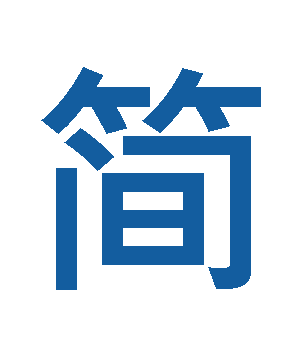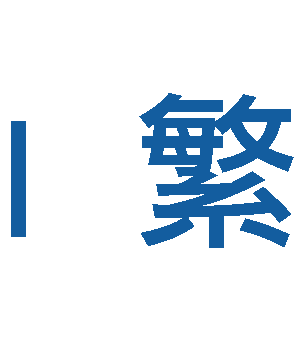
Even though edge computing has recently caught the attention of many device developers, never in history have cloud platforms held more importance. Their growing impact on the overall architecture of AIoT continuous to grow. The reason is quite simple. As the number of edge devices continuous to grow at a constant rate, integration through a scalable cloud platform will be required to realize the real potential and purpose of the IoT – promoting smart and automated applications.
Incorporating cloud platforms in to development has long been overlooked by device developers. However, with AIoT architecture becoming a global trend, the concept of laying a comprehensive IoT ecosystem has started gaining the attention it deserves.
Implementation of cloud platforms becoming exceedingly important in realizing AIoT
Taking the whole ecosystem into perspective, on-site and terminal devices form the outmost layer of the overall AIoT architecture yet they not only outnumber the rest, but are also the most complicated. In other words, they come in all forms and sizes. For this reason, users wishing to implement AIoT often encounter large-scale maintenance and centralized management issues.
Owing to such demands, users are inclined to adopt a complete cloud platform to store and integrate these edge devices. This not only allows convenient management, but also focuses on advanced big data analysis. Moreover, users in possession of devices which can optimize cloud platform connections as well as facilitate open and flexible settings, will acquire a more competitive edge in the arrival of the AIoT era.
The same mindset exists among cloud platform service providers. Those who are able to better support IoT edge devices, while also offering more efficient, convenient integration and management functions, will directly enhance the competitiveness of their platform products.
Most of the current IoT cloud platform providers are western corporations, including Amazon Web Services (AWS), Cisco, Microsoft, Google, IBM and SAP. In contrast, other vertical markets consist of small and medium platform service providers, where they offer specific services targeting different application settings and products.
For organizations with a dedicated IT Department, networking all devices and implementing a centralized management may seem like a straightforward task. However, the real challenges regarding AIoT implementation is the steps required in making systems smart and automated. As previously stated, the vast amount and variety of internet devices has resulted management and data collection difficulties. Furthermore, information security risk is growing with each passing day. As we enter the IoT era, equipment will be exposed to attacks through the internet. Without professional and long-term protection, enterprises are susceptible to attacks which in turn result in losses.
The concept of middleware services and advanced multi-tier applications
In view of the above, adopting cloud platform services from a professional third-party provider is the optimal business strategy. Such strategy not only mitigates device integration and management issues that an enterprise faces when establishing its in-house cloud platform, but also reduces information security risks. More importantly, problems in the data collection and analysis can be resolved through cooperation with a third-party provider. All of the current major cloud platform providers have the technology to implement artificial intelligence. Through cooperation with these providers, enterprises can turn different business operation data into valuable business intelligence.
In general, the concept of an AIoT cloud platform is similar to that of a “firmware” responsible for middleware applications and devices. This requires a multitude of infrastructure connections and data transmission, but in essence, that is the structure of its overall architecture.
However, as technology and applications develop, new concepts have been gradually been added to this three-tier architecture. For example, the Industrial Technology Research Institute (ITRI) has proposed a smart edge computing technology that divides the cloud computing architecture into three layers: A Central Cloud as the top layer, a Mobile Edge Cloud as the middle layer, and a Fog Computing Device in the client end as the bottom layer.
By incorporating large to small layers, the architecture is able to meet the usage requirements of different cloud services. ITRI pointed out that devices closer to the client’s end will require low latency and therefore Edge cloud and Fog Cloud should be implemented, while the Central Cloud as a form of support. However, if a solution has a higher latency tolerance and requires large databases, service functions should be provided by the Central Cloud.
eASPNet Taiwan Inc.: Through virtual technology, barriers to cloud service applications are eliminated
To keep up with the changes of the digital age, many enterprises are planning or already adopting digital transformations as an important business strategy. Enterprises transforming from a conventional business into a new business entity with highly digitized operations will frequently encounter challenges in the process.
Hans Huang, Chief Technology Officer (CTO) of eASPnet Taiwan Inc., indicated that enterprise clients encounter different challenges (for both technical and organization level) during the course of implementing digital transformation, especially as they intend on preserving the company’s existing core values. Many traditional industries need to approach digital transformation with caution and take into account factors such as: whether it possesses the required talent, whether the organization and its technical department can keep up with the pace of the transformation, as well as challenges from competitors and feedback from clients.
Previously focusing on data center, colocation hosting and bandwidth services, eASPNet has gradually transformed to a cloud service provider. eASPNet experienced the same digital transformation as its business clients and therefore has comprehensive understanding of the difficulties and problems that the client may encounter down the road or might be dealing with at this moment.
By giving examples, Hans Huang explained that, due to the lack of IT manpower, many small and medium-sized enterprises clients chose to relay on the services of major public cloud providers in Europe and North America. These providers offer fast services and flexible payment plans. The downside however, is that when problems occur and additional technical support is needed, clients will be charged additional fees for technical support services. In addition, technical support is also provided through the service provider’s native language, making it communication hassle for many domestic enterprises.
Another problem is that even though these public cloud providers will gladly assist clients in storing their data on to public clouds, they seldom help the clients transfer their data off the clouds. This generates additional manpower and technical costs for to solve this issue. Although public cloud services are speedy and offer flexible payment plans. When problems occur and clients need technical support, additional fees are required. Besides, the need to speak English in order to communicate with the foreign public cloud provider, poses a significant challenge for many domestic enterprises.
Furthermore, even though the public cloud providers are glad to assist clients in storing their data to public clouds, very few public cloud providers will help clients transfer their data off the clouds. This will cost enterprises additional manpower and technology costs to solve this issue.
Therefore, through the cooperation with VMware, eASPNet adopted VMware solutions on public cloud platforms. VMware is also used to develop the client-end all-in-one solution. Since the majority of clients’ virtual environments are built on VMware platforms, eASPNet adopted the same VMware environment for both the cloud platform and the client-end, allowing clients to execute data conversion between public clouds and the enterprise’s private clouds with more flexibility.
Hans Huang indicated that eASPNet has worked with VMware (a global leader in cloud computing infrastructure) since 2016 to build Taiwan’s first “Local Hybrid Cloud”, enabling the vast number of businesses using VMware infrastructure, to obtain more secure, stable and high-performance cloud services by utilizing the hybrid cloud platform developed using VMware’s SDDC (Software Defined Data Center) technology. Moreover, eASPNet is also an authorized and VMware Cloud Verified partner.
In comparison with other vendors, eASPNet not only operates its own professional enterprise data center, but also has extensive experience in ASP value-added applications. eASPNet’s service areas also include colocation hosting, cloud application services and many other solutions.
Regarding the outlook of 2020, Hans Huang stressed that the continual enhancement on the vertical integration capability of the cloud applications will be eASPNet ‘s main objective. In face of the digital transformation trend, eASPNet will prioritize AI implementation and the provision of Container architecture solutions for 2020, helping clients enhance their development speed. In addition to providing optimal and comprehensive local enterprise cloud service, eASPNet also adopts this service model to reach out to overseas clients and offer its quality services.





